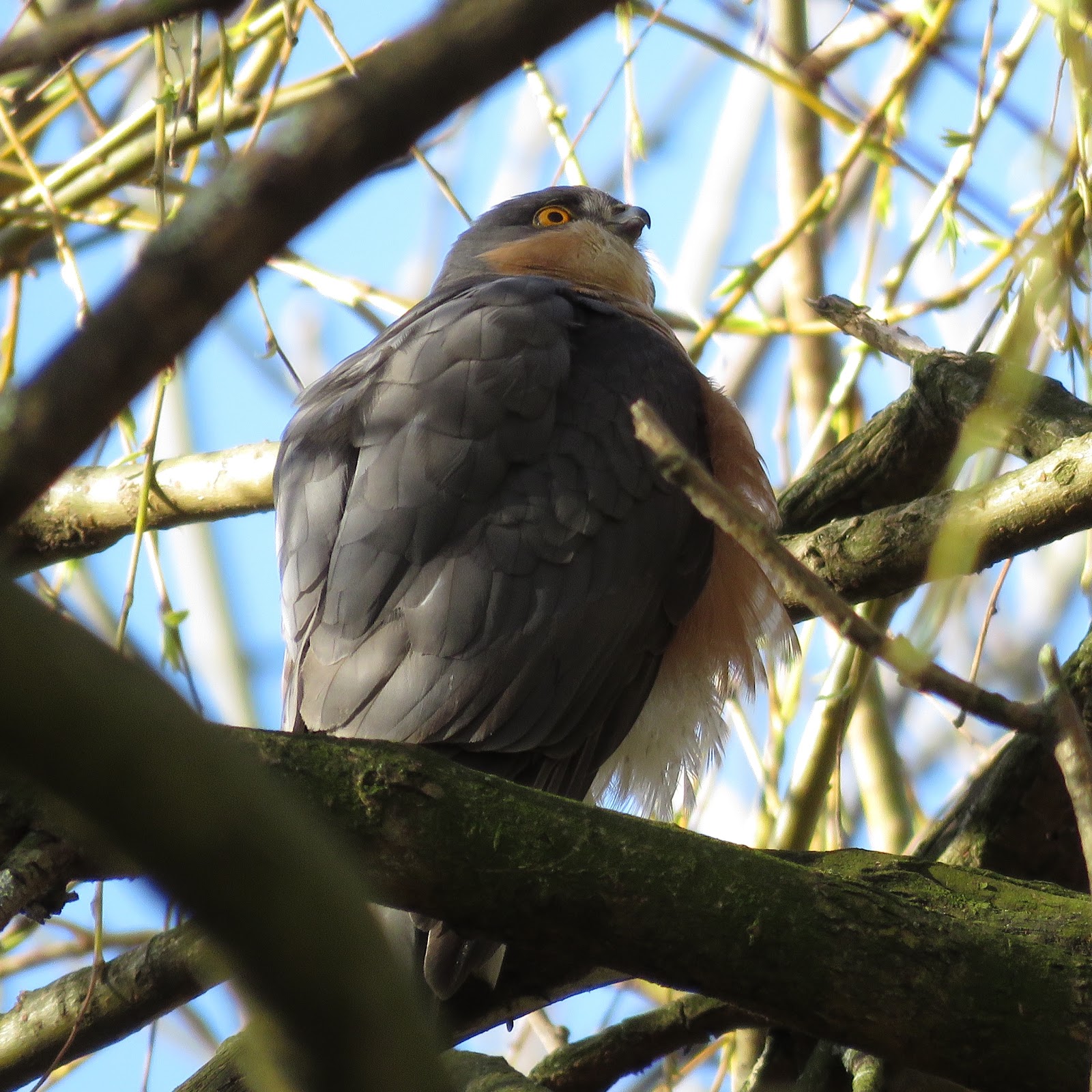Mallards form new breeding pairs in the autumn, and the couple stays close together, the male guarding the female. Mating within the pair is very ritualised and brief. There is head pumping by both male and female, the female adopts a flat position and the male mounts her. Here is an example from last week.
However, occasionally, other males chase a female - often in groups - grasp her and copulate with her forcefully. A feature of this behaviour that made researchers think this might be an adaptive behaviour for males is that forced copulations tend to happen during the period of egg laying, not before egg laying, and rarely after a clutch has been completed. In addition forced copulations tend to happen in the morning, just after the female leaves the nest after laying an egg. The female lays an egg each day, and ovulates just after laying, and it is during this period that there is a small window of time before the albumen is deposited and blocks entrance for sperm that there is a chance for forced copulation to result in fertilisation. The female does not need to be fertilised at this point as she has stored her mate's sperm and therefore she would have fertilised the egg with his sperm. After all, she has chosen this male to be her mate. But the opportunistic males are after fertilising her eggs in this short time window. There is little the female can do to escape the males's attention, she flies away if she can manage, only to be pursued by the males, its male often trying to intervene. I have noticed that males tend to join in chases and forced copulations if they notice a female being chased.
The number of males increased to six at some point. The
female's bill is just visible towards the right, on the ground.
Although the female cannot always resist forced copulations, she is not so defenceless after all: her vagina comes to the rescue. What! I hear you say, how? Let me introduce first the fact that ducks are amongst the 3% of bird species that have penises (the right term is pseudopenis or phallus) a corkscrew-like eversible organ, that in the case of the mallard is about 13 cm long (by no means the record, a close relative of the Ruddy duck has the dubious honour).
A screen grab of a male that managed to copulate. Its penis still everted as he walks to the water.
Another view of the male with dangling penis, just after he dismounted.
Now to the female side. Some female ducks, including the mallard have evolved long, twisted vaginas with dead ends near the cloacal opening, making it harder for a male trying to copulate with her to achieve a successful intromission and fertilise her eggs if she doesn't collaborate. The female's vagina also twists clockwise, making it harder for the male anticlockwise rotating penis to work. The males of these duck species also have longer penises. This co-evolution might have been spurred by forced copulations, in which the females respond to increased penis length with increased vaginal complexity to thwart the likelihood of successful fertilisation. The little data on extra-pair paternity in ducks appears to support this hypothesis, as the occurrence of extra-pair offsprign appears to be quite low (less than 10%) in the ducks studied. An excellent example of an arms race between the sexes.More information
Brennan, P. L., Prum, R. O., McCracken, K. G., Sorenson, M. D., Wilson, R. E., & Birkhead, T. R. (2007). Coevolution of male and female genital morphology in waterfowl. PLoS one, 2(5), e418.
Cheng, K. M., Burns, J. T., & McKINNEY, F. R. A. N. K. (1982). Forced copulation in captive mallards (Anas platyrhynchos): II. Temporal factors.Animal Behaviour, 30(3), 695-699.
McCracken, K. G., Wilson, R. E., McCracken, P. J., &; Johnson, K. P. (2001). Are ducks impressed by drakes' display?. Nature, 413(6852), 128. here.


















































